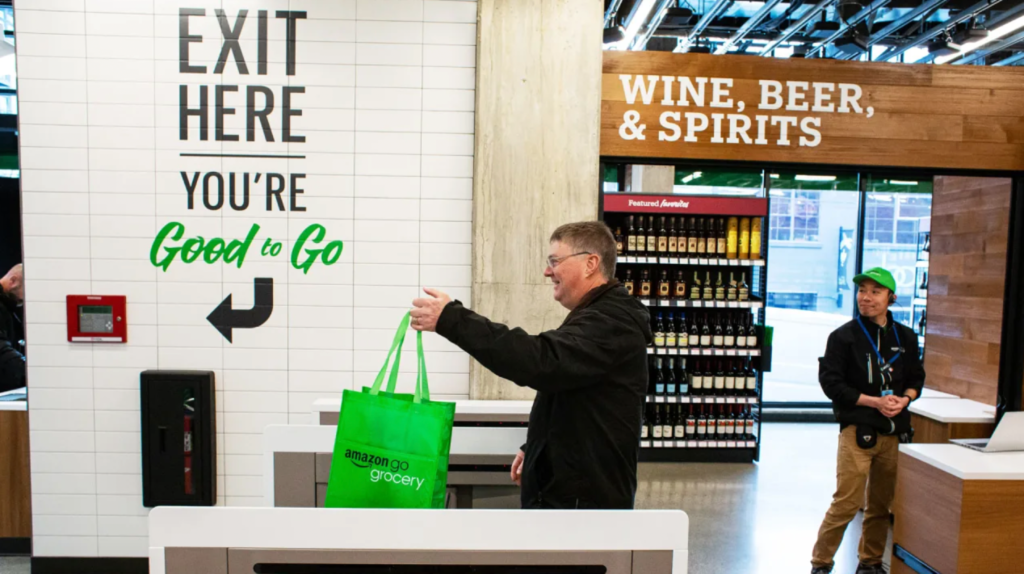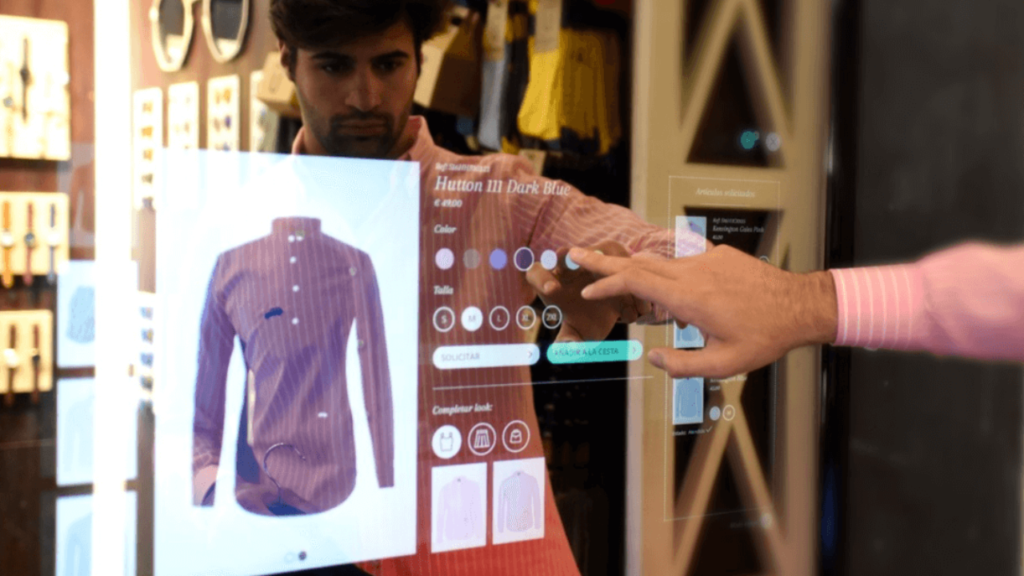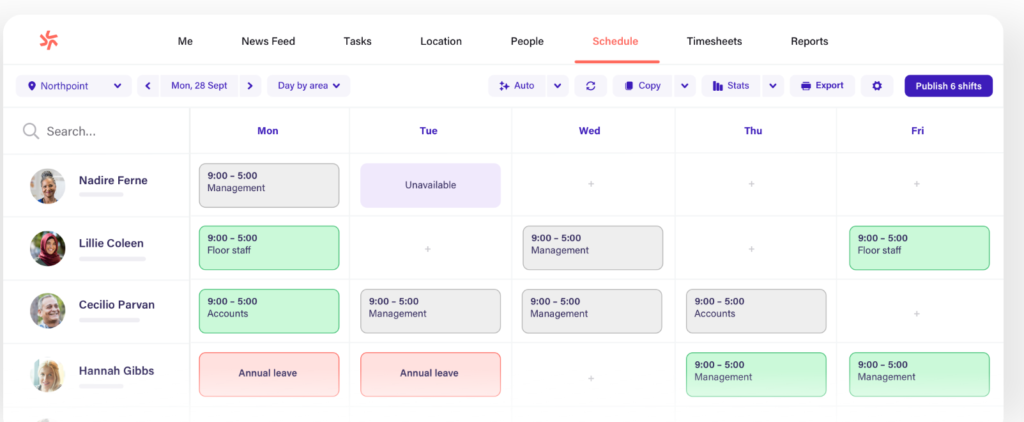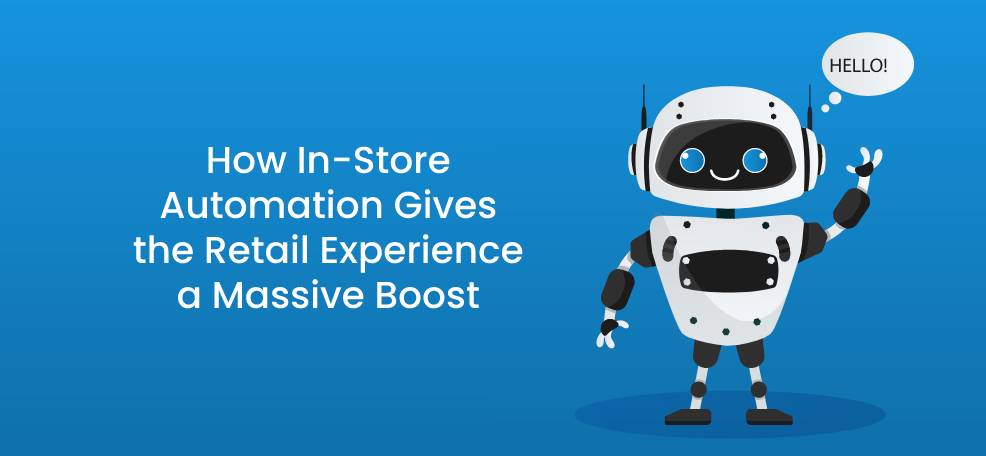In 2022, it almost feels as though automation has been a part of the retail space forever.
You’d be hard-pressed to walk into a supermarket and not see a kiosk or two for customers to scan their own groceries as they go.
Automation has become integral to the shopping experience, and it’s only growing in sophistication.
The automation of the retail space is undeniably becoming more seamless.
Take the virtual showrooms being used by Walmart, for instance – they allow customers to interact with digital representations of products.
High-end fashion brands are using virtual fitting rooms, an industry growing to the tune of an estimated $15.43 billion by 2028.

This is an interesting space to watch – not just for its exciting and almost novel innovations, but because of the impact it has on the customer experience, and therefore the customer’s lifetime value.
Considering that the majority of consumers (66 percent) see automation as the key to a better retail experience, it’s clear that this is an area retailers can benefit from exploring.
So, let’s take a deep dive into the world of in-store automation and see what makes it so important for retailers.
Retail Automation: What it Means
Gone are the days in which ‘automation’ simply referred to Holden’s infamous production line. In the digital age, automation is about leveraging the power of technology like virtual reality (VR), augmented reality (AR), and artificial intelligence (AI) to create a more efficient and seamless customer experience.
This is especially relevant for retail, which is under pressure to reinvent the in-store experience in order to keep up with online shopping.
Updated 2022 studies show that the majority of US shoppers (around 55 percent) prefer to make their purchases online, which is a drastic change from 2020 statistics.

Furthermore, the eCommerce industry is predicted to reach $5.5 billion this year – meaning brick-and-mortar stores are up against a fierce contender. Now more than ever, retailers need to up their game in order to stay on top of trends.
The growing demands of retail customers have begun to shape the automation trends we see emerging in-store, as documented by the 2022 Ayden-KPMG Retail Report:
- A seamless experience. 57 percent of shoppers are more likely to shop with a brand that allows its loyalty program to integrate with their payment card.
- Enhanced in-store shopping. 55 percent of shoppers prefer to spend money with retailers that offer a tech-enhanced in-store experience (such as interactive displays, personalised recommendations, digital mirrors, self-service kiosks).
- Frictionless. 70 percent of consumers will switch brands after a bad experience with in-store shopping (e.g. long lines, lack of help from staff, disengaging).
These are the expectations that are prompting retailers to upgrade their in-store automation. By following the trends and expectations, retailers have a much better chance of maintaining their customer base and continuing to thrive.
Trending automated solutions for brick-and-mortar stores
Put simply, automation is the act of reducing human intervention. This holds great appeal for retail as it strives to keep pace with eCommerce: the less human interaction required, the less chance for error, and the faster transactions can be processed.
Automation is already widely used in warehousing and logistics, and is now making its way into retail stores.
In fact, there are a number of automated solutions already trending in the retail space at the moment.
These include:
- Using AR and VR to create an immersive customer experience.
For example: Westfield stores have begun using Mango displays, which are magic mirrors that allow customers to see what they would look like in different outfits. - Using robots not only to manage inventory, but also to interact with customers.
For example: Softbank Mobile Stores deploy their ‘Pepper’ robots across 140 stores, humanoid robots that can answer questions, direct people, handle small-talk, and even take selfies. - The use of smart sensors and beacons to track customer movements and preferences.
For example: Red Bull in Canada has begun to use beacons to deliver targeted ads and coupons to customers in-store, which helps to improve the customer experience and increase sales. - The use of kiosk-free checkouts.
For example: Amazon Go is a store that has done away with traditional checkouts, instead of using sensors and algorithms to track which items customers take from the shelves. The payment is made automatically when the customer leaves the store.

While some of these trends – like the use of robots – may seem far-fetched, they are actually quite practical and can have a big impact on retail as a whole. Let’s take a closer look at some of the advantages that automation can bring to brick-and-mortar stores.
How automation boosts the retail experience
Emphasis is often placed on the ways in which retail automation improves the consumer experience. This is because automation drastically reduces common frustrations like wait times, long lines, and a lack of inventory and assistance.
Retail automation also improves the experience on the back-end, with new business tech making employees more efficient and organised, and boosting inventory accuracy. Let’s explore how automation does all of this.
Front-end benefits
1. Better customer service
Through the use of in-store automation, customers are served faster and more efficiently. The technologies used to achieve this include:
- Intelligent queuing systems that keep track of customer numbers and manage the flow of people through the store;
- Automated checkouts that allow customers to scan and pay for their own items, thus reducing the time spent in line;
- Interactive kiosks where customers can order products that are not available in-store or get help with their purchase;
- Digital signage that provides customers with information about products and promotions.
2. More personalized service
In-store automation technologies can also be used to collect customer data, which can then be used to provide a more personalized service.
- Beacon technology can be used to track customer movements around the store in order to provide them with targeted promotions and product suggestions;
- Customer Relationship Management (CRM) software can be used to keep track of what products customers have been buying and make recommendations for similar or complementary products;
- Analytics software can be used to track the amount of time customers spend in different parts of the store and identify popular or unpopular products and sections.
3. Immersive shopping experience
By using AR and VR technology, retailers can create an immersive shopping experience that allows customers to try on clothes and accessories, see what they would look like in different colors and styles, and even order products they see online.
- Smart mirrors can be used to show customers how they will look in different outfits;
- AR apps can be used to overlay digital images of products onto the real world, allowing customers to view them from all angles;
- VR headsets can be used to immerse shoppers in a completely virtual environment;
- 360-degree cameras can be used to capture and share footage of products from all angles.

4. Safer shopping experience
In the coronavirus age, safety is a top concern for shoppers. In-store automation can help to create a safer shopping experience by doing the following:
- Detecting and responding to spills and accidents;
- Alerting staff when products are running low or need to be replaced;
- Using heat mapping technology to identify areas of the store that are most crowded or where there is a higher chance of accidents happening;
- Using high-level temperature monitoring tech to detect and prevent the spread of germs and viruses.
Back-end benefits
1. More efficient scheduling
Stores can use highly sophisticated apps to build a retail employee scheduling strategy that is tailored to their specific needs.
These apps can optimize schedules based on sales data, customer traffic, and employee availability in order to ensure that the store is always fully staffed and that employees are working only when they are needed.

2. Reduced inventory costs
In-store automation can help to reduce inventory costs by streamlining the buying and stocking process.
Automated ordering systems can be used to keep track of stock levels and order new products when stocks run low, while automated sorting and packing systems can be used to quickly and efficiently pack and ship orders.
3. Reduced labor costs
In-store automation can also help to reduce labor costs by automating certain tasks that were traditionally done by human employees. This includes tasks such as scanning and bagging items, cleaning floors and surfaces, and packing and shipping orders.
4. Upskilled and proficient employees
New knowledge management software solutions help to automate the process of skill-sharing between employees, which allows new employees to upskill more efficiently and generate better outcomes for the store.
Summary
During a time when eCommerce is cornering the retail customer base faster than we can crunch the numbers, it’s more crucial than ever for in-store retailers to explore new and innovative tech solutions.
With automation utilized properly on both the front and back end of their operations, retailers can ensure that they remain relevant, efficient, and – most importantly – in demand.




